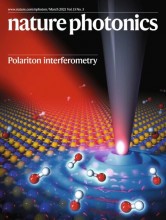Related news by tag Rainer Hillenbrand
How to manipulate light on the nanoscale over wide frequency ranges
Research with nanolight based on phonon polaritons has developed considerably in recent years thanks to the use of sheet-structured nanomaterials such as graphene, boron nitride or molybdenum trioxide: the so-called van der Waals materials. Nanolight based on phonon polaritons is very promising because it can live longer than other forms of nanolight, but one of the main drawbacks to the technological applications of this nanolight based on phonon polaritons is the limited frequency ranges characteristic of each material, it exists only in narrow frequency region.
But now, an international team has proposed a novel method that allows to widely extend this range of working frequencies of phonon polaritons in van der Waals materials. This consists in the intercalation of alkaline and alkaline earth atoms, such as sodium, calcium or lithium, in the laminar structure of the van der Waals vanadium pentaoxide material, thus allowing to modify its atomic bonds and consequently its optical properties.
Considering that a large variety of ions and ion contents can be intercalated in layered materials, on-demand spectral response of phonon polaritons in van der Waals materials can be expected, eventually covering the whole mid-infrared range, something critical for the emerging field of phonon polariton photonics.
The finding, published in the journal Nature Materials, will allow progress in the development of compact photonic technologies, such as high-sensitivity biological sensors or information and communication technologies at the nanoscale.
CIC nanoGUNE´s research on light covered in Nature Photonics
Light plays an essential role in modern science and technology, with applications ranging from fast optical communication to medical diagnosis and laser surgery. In many of these applications, the interaction of light with matter is of fundamental importance.


